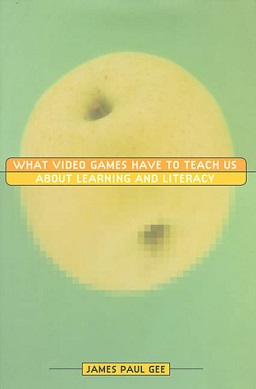Related Research Articles

Learning theory describes how students receive, process, and retain knowledge during learning. Cognitive, emotional, and environmental influences, as well as prior experience, all play a part in how understanding, or a worldview, is acquired or changed and knowledge and skills retained.
Instructional scaffolding is the support given to a student by an instructor throughout the learning process. This support is specifically tailored to each student; this instructional approach allows students to experience student-centered learning, which tends to facilitate more efficient learning than teacher-centered learning. This learning process promotes a deeper level of learning than many other common teaching strategies.

Pedagogy, from Ancient Greek παιδαγωγία (paidagōgía), most commonly understood as the approach to teaching, is the theory and practice of learning, and how this process influences, and is influenced by, the social, political and psychological development of learners. Pedagogy, taken as an academic discipline, is the study of how knowledge and skills are imparted in an educational context, and it considers the interactions that take place during learning. Both the theory and practice of pedagogy vary greatly as they reflect different social, political, and cultural contexts.
Transformative learning, as a theory, says that the process of "perspective transformation" has three dimensions: psychological, convictional, and behavioral.
Transformative learning is the expansion of consciousness through the transformation of basic worldview and specific capacities of the self; transformative learning is facilitated through consciously directed processes such as appreciatively accessing and receiving the symbolic contents of the unconscious and critically analyzing underlying premises.
Situated cognition is a theory that posits that knowing is inseparable from doing by arguing that all knowledge is situated in activity bound to social, cultural and physical contexts.
Computers and writing is a sub-field of college English studies about how computers and digital technologies affect literacy and the writing process. The range of inquiry in this field is broad including discussions on ethics when using computers in writing programs, how discourse can be produced through technologies, software development, and computer-aided literacy instruction. Some topics include hypertext theory, visual rhetoric, multimedia authoring, distance learning, digital rhetoric, usability studies, the patterns of online communities, how various media change reading and writing practices, textual conventions, and genres. Other topics examine social or critical issues in computer technology and literacy, such as the issues of the "digital divide", equitable access to computer-writing resources, and critical technological literacies. Many study by scientist such have shown that writing on computer is better than writing in a book
Critical literacy is the ability to find embedded discrimination in media. This is done by analyzing the messages promoting prejudiced power relationships found naturally in media and written material that go unnoticed otherwise by reading beyond the author's words and examining the manner in which the author has conveyed his or her ideas about society's norms to determine whether these ideas contain racial or gender inequality.

Composition studies is the professional field of writing, research, and instruction, focusing especially on writing at the college level in the United States.
Computer-supported collaborative learning (CSCL) is a pedagogical approach wherein learning takes place via social interaction using a computer or through the Internet. This kind of learning is characterized by the sharing and construction of knowledge among participants using technology as their primary means of communication or as a common resource. CSCL can be implemented in online and classroom learning environments and can take place synchronously or asynchronously.
William Cope, known as Bill Cope, is an Australian academic, author and educational theorist who was a research professor in the Department of Educational Policy Studies at the University of Illinois, Urbana-Champaign, He has also been the Managing Director of Common Ground Publishing at the university.

James Gee is a retired American researcher who has worked in psycholinguistics, discourse analysis, sociolinguistics, bilingual education, and literacy. Gee most recently held the position as the Mary Lou Fulton Presidential Professor of Literacy Studies at Arizona State University, originally appointed there in the Mary Lou Fulton Institute and Graduate School of Education. Gee has previously been a faculty affiliate of the Games, Learning, and Society group at the University of Wisconsin–Madison and is a member of the National Academy of Education.
A significant construct in language learning research, identity is defined as "how a person understands his or her relationship to the world, how that relationship is structured across time and space, and how the person understands possibilities for the future". Recognizing language as a social practice, identity highlights how language constructs and is constructed by a variety of relationships. Because of the diverse positions from which language learners can participate in social life, identity is theorized as multiple, subject to change, and a site of struggle.
Problem-posing education, coined by the Brazilian educator Paulo Freire in his 1970 book Pedagogy of the Oppressed, is a method of teaching that emphasizes critical thinking for the purpose of liberation. Freire used problem posing as an alternative to the banking model of education.
The study and practice of visual rhetoric took a more prominent role in the field of composition studies towards the end of the twentieth century and onward. Proponents of its inclusion in composition typically point to the increasingly visual nature of society, and the increasing presence of visual texts. Literacy, they argue, can no longer be limited only to written text and must also include an understanding of the visual.

James Robert Martin is a Canadian linguist. He is Professor of Linguistics at The University of Sydney. He is the leading figure in the 'Sydney School' of systemic functional linguistics. Martin is well known for his work on discourse analysis, genre, appraisal, multimodality and educational linguistics.

Multimodality is the application of multiple literacies within one medium. Multiple literacies or "modes" contribute to an audience's understanding of a composition. Everything from the placement of images to the organization of the content to the method of delivery creates meaning. This is the result of a shift from isolated text being relied on as the primary source of communication, to the image being utilized more frequently in the digital age. Multimodality describes communication practices in terms of the textual, aural, linguistic, spatial, and visual resources used to compose messages.
Translanguaging is a term that can refer to different aspects of multilingualism. It can describe the way bilinguals and multilinguals use their linguistic resources to make sense of and interact with the world around them. It can also refer to a pedagogical approach that utilizes more than one language within a classroom lesson. The term "translanguaging" was coined in the 1980s by Cen Williams in his unpublished thesis titled “An Evaluation of Teaching and Learning Methods in the Context of Bilingual Secondary Education.” Williams used the term to describe the practice of using two languages in the same lesson, which differed from many previous methods of bilingual education that tried to separate languages by class, time, or day. In addition, Vogel and Garcia argued that translanguaging theory posits that rather than possessing two or more autonomous language systems, as previously thought when scholars described bilingual or multilingual speakers, bilinguals and multilingual speakers select and deploy their languages from a unitary linguistic repertoire. However, the dissemination of the term, and of the related concept, gained traction decades later due in part to published research by Ofelia García, among others. In this context, translanguaging is an extension of the concept of languaging, the discursive practices of language speakers, but with the additional feature of using multiple languages, often simultaneously. It is a dynamic process in which multilingual speakers navigate complex social and cognitive demands through strategic employment of multiple languages.

What Video Games Have to Teach Us About Learning and Literacy is a book by James Paul Gee that focuses on the learning principles in video games and how these principles can be applied to the K-12 classroom. Video games can be used as tools to challenge players, when they are successful. They motivate players to persevere and simultaneously teach players how to play the game. These games give a glimpse into how one might create new and more powerful ways to learn in schools, communities, and workplaces. Gee began his work in video games by identifying thirty-six learning principles that are present in—but not exclusive to—the design of good video games. He further argues for the application of these principles into the classroom environment. What Video Games Teach Us about Learning and Literacy is a call to educators, teachers, parents and administrators to change the approach to pedagogy.
Mary J. Schleppegrell is an applied linguist and Professor of Education at the University of Michigan. Her research and praxis are based on the principles of Systemic Functional Linguistics (SFL), a theory derived from the work of social semiotic linguist Michael Halliday. Schleppegrell is known for the SFL-based literacy practices she has continuously helped to develop for multilingual and English language learners throughout her decades long career, which she began as an educational specialist before transitioning to the field of applied linguistics. As a result, her publications demonstrate a deep understanding of both the theories and practices related to teaching and learning.

Multimodal pedagogy is an approach to the teaching of writing that implements different modes of communication. Multimodality refers to the use of visual, aural, linguistic, spatial, and gestural modes in differing pieces of media, each necessary to properly convey the information it presents.
References
- The New London Group. (1996). A pedagogy of multiliteracies: Designing social futures. Harvard educational review, 66 (1), 60–93.
- Cope, B. & Kalantzis, M. (Eds.) (2000) Multiliteracies: Literacy Learning and the Design of Social Futures. Routledge: London.
- Cope, B., & Kalantzis, M. (2009). "Multiliteracies": New literacies, new learning. Pedagogies: An international journal, 4(3), 164–195.
- Cope, B., & Kalantzis, M. (2015). The things you do to know: An introduction to the pedagogy of multiliteracies. In B. Cope & M. Kalantzis (Eds.), A pedagogy of multiliteracies: Learning by design (pp. 1–36). London: Palgrave
- "Putting Multiliteracy to the Test" Accessed 2-26-14
- Kalantzis, M., and Cope, B. (2012). Literacies. Cambridge: Cambridge University Press. Chapter 4.
- Selber, S. (2009). "Multiliteracies for a Digital Age". Southeastern Illinois University Press: USA